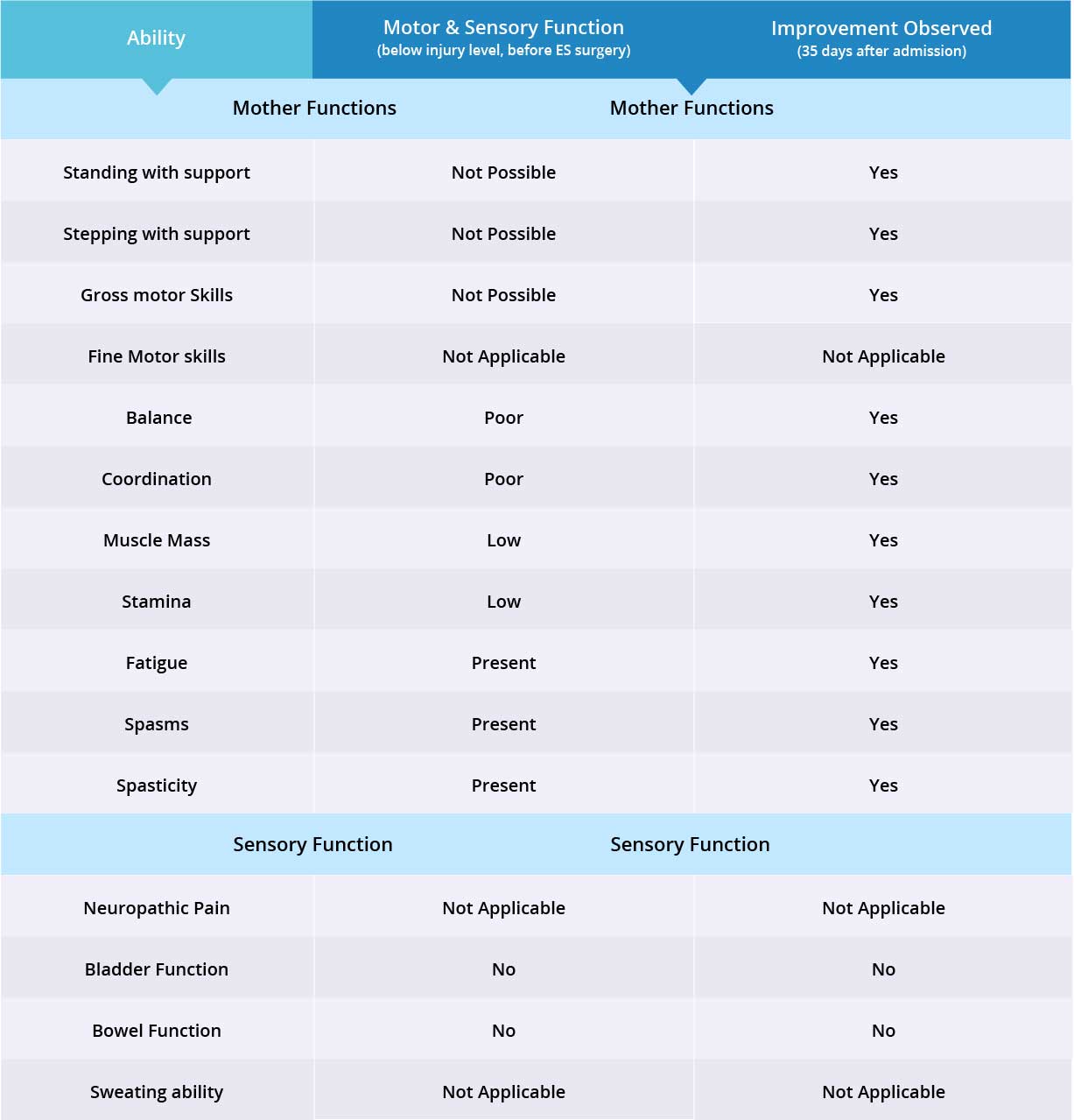Case Study
Patient B,
Male, Romanian
Table of Contents
Patient Overview
Age at time of treatment: 18 – 25
Injury Level: T7, T8
Treatment Received: Epidural Stimulation
Location of Treatment: Thailand
Time between injury and treatment: 5 – 15 years
Date of Surgery: 30/07/2018
Date of Discharge: 28/08/2018
Condition on Admission
Patient sustained a complete T7-T8 spinal cord injury, characterized by complete loss of motor and sensory functions below the injury level. He is paraplegic with normal upper limb functions and is independent in his daily activities. Patient endures mild spasticity and spasms, but has no neuropathic pain and normal sweating ability.
Previous Therapies & Treatments
Patient received stem cells in 2017, as well as physical and occupational therapy before coming to Unique Access Medical.
Patient sustained a complete T7-T8 spinal cord injury, characterized by complete loss of motor and sensory functions below the injury level. He is paraplegic with normal upper limb functions and is independent in his daily activities. Patient endures mild spasticity and spasms, but has no neuropathic pain and normal sweating ability.
Verita Neuro Treatment Received
After a spinal MRI scan and comprehensive blood work, patient underwent laminectomy and implantation of the epidural stimulation device on July 30, 2018. The device is the ‘Medtronic Restore Advance 16-electrode MRI Compatible Device’. The surgery was completed with no serious complications reported during the postoperative hospital stay. Surgical wounds healed normally and no spinal cord or superficial wound infection was reported.
Device mapping and therapy were carried out after surgery for 35 days. Patient was then discharged to continue physiotherapy independently at home.

Results
- Motor Functions
- Sensory Functions
- Autonomic Functions
When standing and stepping required only manual support, with no need for a hoist. He was able to use a walking frame and parallel bars. When patient is standing he requires assistance in locking his hips and knees. Patient has good trunk control while standing and is able to bear weight equally on both legs. Patient is able to stand at the parallel bars with some assistance.
When stepping, patient uses a walking frame and is able to lift both feet. Patient’s left side is stronger than the right. Patient has very good coordination between left and right feet when taking steps. When taking short steps, patient does not require assistance in foot placement, but does when taking longer steps.
Patient’s muscle mass has increased and endurance has improved significantly.
There was no noticeable change in bladder and bowel function.

Improvements are monitored in 15 targeted areas: 11 Motor areas and 4 Sensory areas. However, the number of targeted areas may vary depending on patient’s condition prior to admission. If patient does not experience symptoms in certain Motor/Sensory functions, or is not impaired in a specific targeted area prior to surgery, it is excluded from the report (Not Applicable). If there is progress in any given area — either mild, moderate, or significant — it is measured and reported as positive (“Yes”). No improvement, the existence of pain or spasms, or an inability to perform a measured function is reported as “No”.
Results Interpretation
For this patient, 12 areas instead of 15 were reviewed. Fine motor skills were normal prior to his epidural stimulation surgery, so no measurement was taken. Neuropathic pain and sweating ability have also been excluded from the report, as they were normal before surgery. Motor function improved in 10 out of 10 targeted areas. The patient has not experienced any changes in sensory function, which is normally most affected by stem cell treatment.

